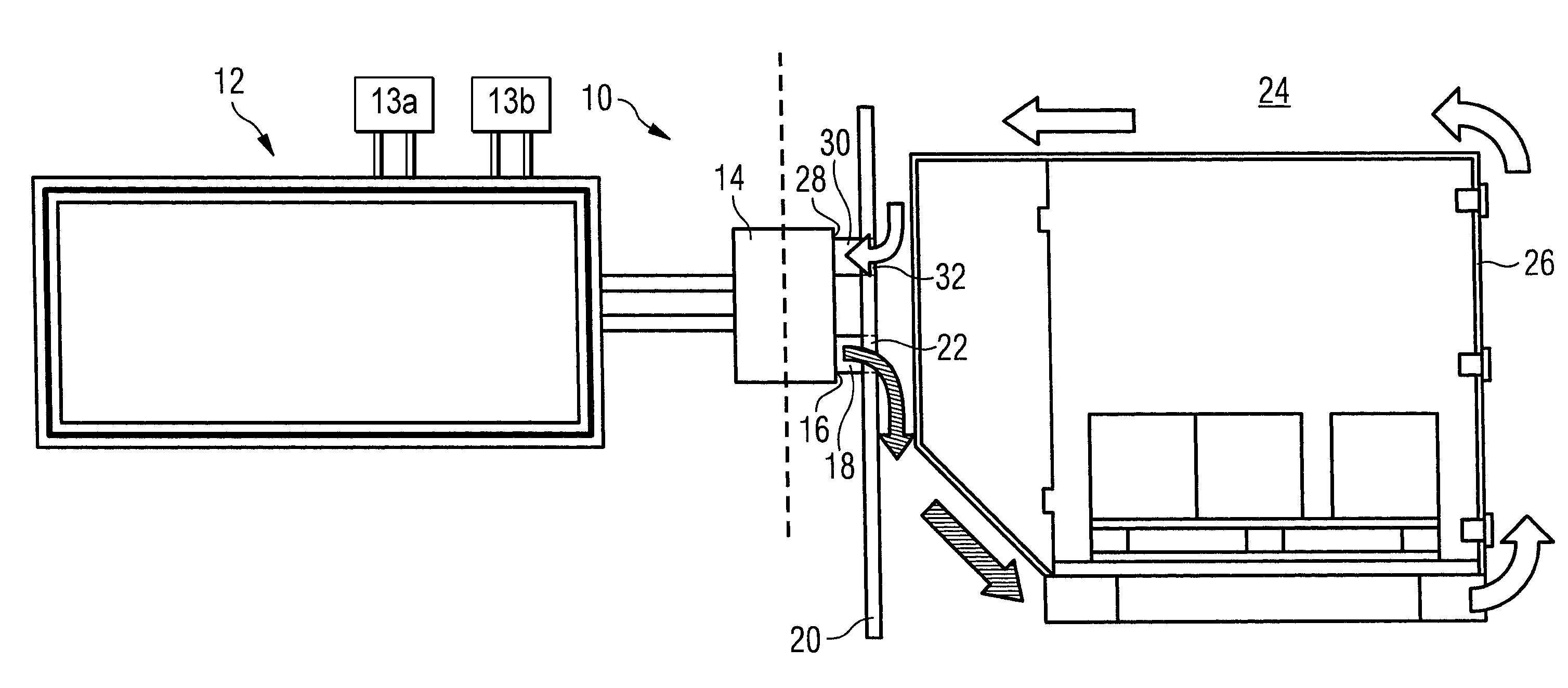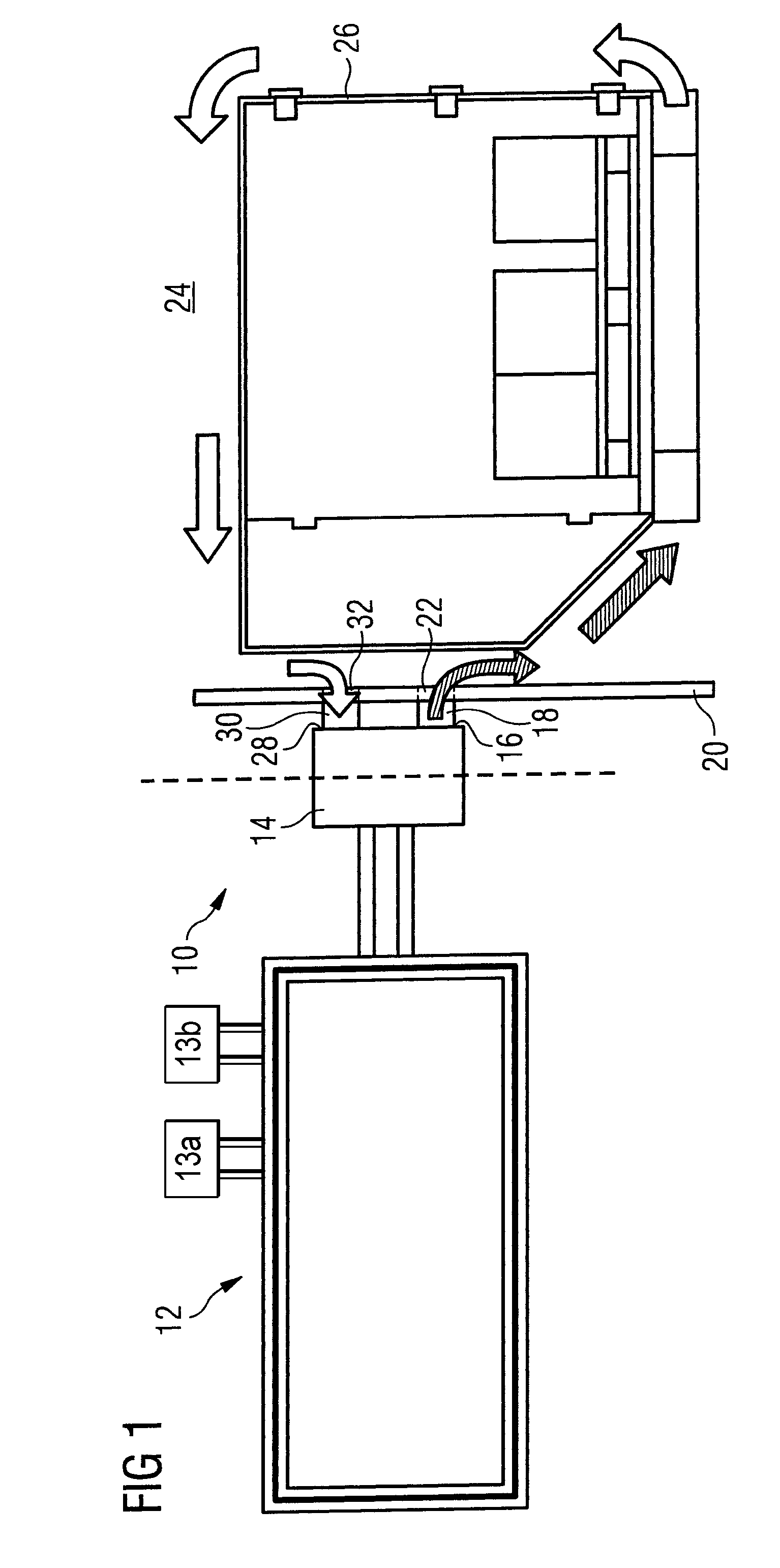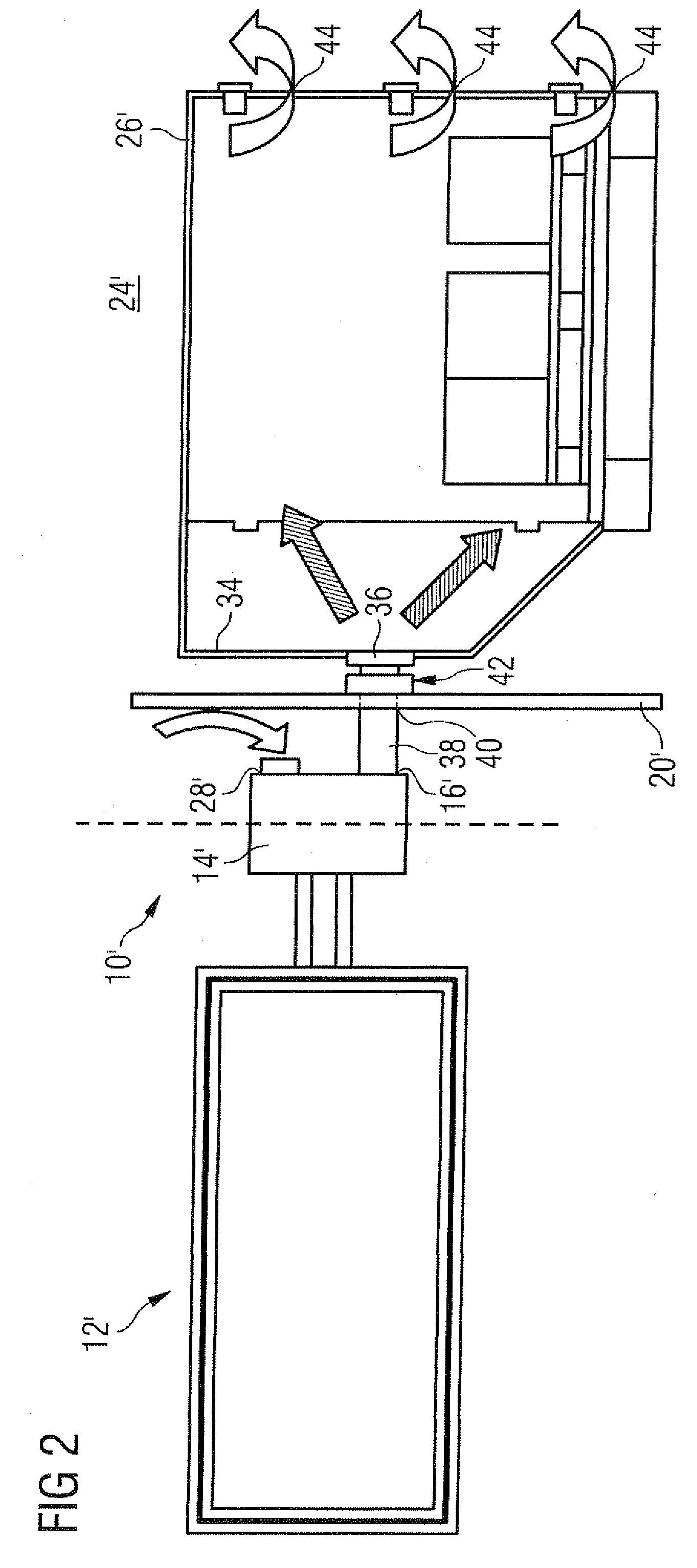Cooling system and freight container
a cooling system and freight container technology, applied in the field of cooling systems and freight containers, can solve the problems of increasing the weight of aircraft air conditioners equipped with two independent climate control systems, increasing the consumption of energy, and inability to interrupt the cold chain in many cases, so as to achieve simple and more cost-effective linkage, simple and convenient maintenance of cooling stations, and the effect of reducing the number of freight containers
- Summary
- Abstract
- Description
- Claims
- Application Information
AI Technical Summary
Benefits of technology
Problems solved by technology
Method used
Image
Examples
first embodiment
[0054]a system 10 for cooling items of freight on board an aircraft is shown in FIG. 1. The system 10 is integrated into a central cooling system 12 of the aircraft, which includes a refrigerating device and also a plurality of cooling stations. The cooling stations of the central cooling system are connected to the refrigerating device via a cooling circuit in which Galden.RTM. HAT 135, obtainable from Solvay Solexis, by way of refrigerant medium is circulated by a pump. Via the refrigerant medium the cooling energy generated by the refrigerating device is supplied to the individual cooling stations. In the cooling circuit, electronically selectable valves are arranged upstream of each cooling station, which in the closed state prevent the supply of refrigerant medium, and consequently cooling energy, to the respective cooling station, and in the open state permit the supply of refrigerant medium, and consequently cooling energy, to the respective cooling station.
[0055]Some cooling...
second embodiment
[0059]FIG. 2 shows a system 10′ for cooling items of freight on board an aircraft. The system 10′ for cooling items of freight on board an aircraft is, like the system 10 represented in FIG. 1, integrated into a central cooling system 12′ of the aircraft with a refrigerating device and also with a plurality of cooling stations to which cooling energy generated by the refrigerating device is supplied by a refrigerant medium which is circulated in a cooling circuit by a pump. A cooling station 14′ of the system 101 for cooling items of freight on board an aircraft is, as in the case of the system 10 shown in FIG. 1, installed in a freight-compartment region in the lateral triangular regions of the aircraft.
[0060]As distinct from the system 10 represented in FIG. 1, however, in the case of the system 10′ shown in FIG. 2 for cooling items of freight on board an aircraft an air outlet 16′ of the cooling station 14′ is directly connected to an air inlet 36 provided in a freight-container ...
third embodiment
[0065]a system 10″ for cooling items of freight on board an aircraft is shown in FIG. 4. The system 10″ for cooling items of freight on board an aircraft is once again integrated into a central cooling system 12″ of the aircraft. The central cooling system 12″ of the aircraft includes a refrigerating device which is connected to a plurality of cooling stations via a cooling circuit, in order to supply cooling energy generated by the refrigerating device to the cooling stations by means of a refrigerant medium which is circulated in the cooling circuit by a pump.
[0066]As distinct from the systems 10, 10′ discussed above, however, the cooling station 14″ of the system 10″ shown in FIG. 4 for cooling items of freight on board an aircraft is not permanently installed in the region of a freight compartment 24″ of the aircraft but is integrated into a freight container 26″ for receiving items of air freight to be subjected to cold storage.
[0067]For the purpose of linking the cooling stati...
PUM
 Login to View More
Login to View More Abstract
Description
Claims
Application Information
 Login to View More
Login to View More - R&D
- Intellectual Property
- Life Sciences
- Materials
- Tech Scout
- Unparalleled Data Quality
- Higher Quality Content
- 60% Fewer Hallucinations
Browse by: Latest US Patents, China's latest patents, Technical Efficacy Thesaurus, Application Domain, Technology Topic, Popular Technical Reports.
© 2025 PatSnap. All rights reserved.Legal|Privacy policy|Modern Slavery Act Transparency Statement|Sitemap|About US| Contact US: help@patsnap.com



